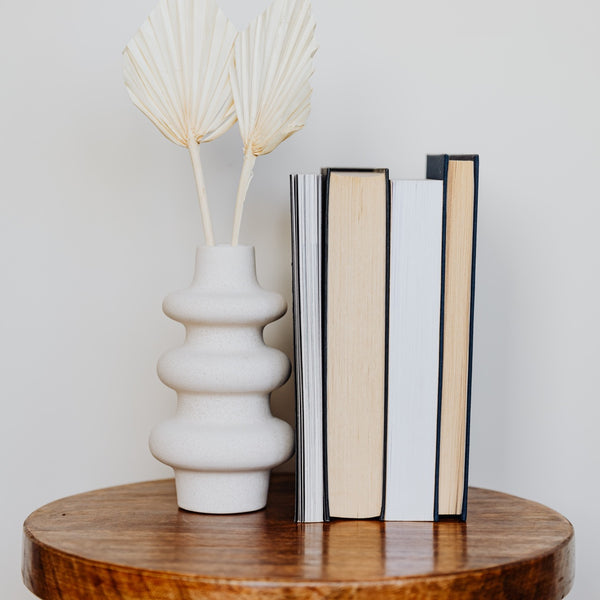Yoga & Meditation to Initiate Change

“Yesterday I was clever, so I wanted to change the world. Today I am wise, so I am changing myself.” - Rumi

Stagnancy can sneak up on you. It happens subtly... maybe you decide to stay home when you've been invited to social events. Instead of taking a chance on something new, you continually retreat into familiar surroundings. And when you do go out, you can't wait to leave. Or perhaps you set aside time for personal projects but find yourself procrastinating, or descend into a social media time warp. Pretty soon, that initial spark of starting something new sinks into the sea of forgotten dreams. Just because you may overlook opportunities, doesn't mean they don't continually surround you. When you're feeling blah and directionless, unable to make that next move... or simply unsure which direction to take, Yoga may hold some answers.
Mindfulness practices help you go inward and gain awareness. And research, shows that open expansive Yoga asanas increase energy and overall self esteem. Additionally, by setting an intention and focus, during Yoga and meditation, you can shift your mindset and embrace change.
Raja is the philosophical limb of Yoga, as written about in the ancient doctrine, Yoga Sutras by Patanjali. Connie L. Habash is a Raja Yoga/Meditation/Hatha teacher and teacher trainer in the San Francisco Bay Area. Connie says, “Hatha Yoga (asana) is intended, ultimately, to take us to the same goal: Union, or spiritual Oneness. The physical poses prepare us in body, mind, and spirit to undertake the more daunting task of stilling the mind through meditation. They are meant to work together.” When’s the best time to do the asana portion? Connie says, “a Hatha practice is excellent just before meditation, and will help the meditation deepen.” Why is it important to integrate the philosophical aspects along with physical movements? Connie explains that “Raja Yoga, will likewise transform the Hatha practice into a more meditative, internal experience.”
*Before doing Yoga, check with your Dr. and make sure it’s safe for you to practice. All bodies are different... To start, go at a slow pace, never do anything that causes pain.
Surrender in Restorative Yoga

When energy becomes static and change feels difficult, allow time to rest in stillness. Connie says, “often I will have a client in a simple restorative pose supporting the opening of the chest.”
Connie's instructions: “lie on your back with a small rolled up blanket placed across the back of the upper chest, at the bottom tips of the shoulder blades. The arms can rest out to the sides, or reach the arms overhead on the floor for more release. The knees can be bent to relax the lower back, or straight if they are at ease.”
Power Up in Warrior One

To embrace your inner strength, embody the Warrior. According to Connie, “Warrior needs courage, which arises from the heart chakra. And Warrior I is a great one for feeling the strength needed for embracing the new.”
Connie's Instructions:
“Stand with your feet about 3 ½- 4 feet apart. Turn the right foot out 90 degrees and the left foot slightly in. Shift your hips to face towards the right foot, and bend your right knee towards a right angle. Then, as you inhale, reach the arms out and up overhead, lifting and opening the chest and lengthening the armpits. Breathe in your strength... Repeat on the other side.”
Expand Awareness In Chair Fish (Matyasana)

Senior teacher, Linda Mangin, has twenty years of Hatha Yoga instruction under her Yogini Belt (including chair Yoga). Linda also holds a certification in stress management, and looks to asana practice as a way to achieve harmony in daily life. For implementing change, Linda suggests, “Fish pose, (Matyasana).” Linda calls it a “strong asana that expands the chest and helps relieve tension in the middle and upper back. Chest openers help you maintain naturally healthy posture... At the same time, they bring more oxygen into your system and allow you to great daily challenges with courage.”
Linda's instructions:
“Sit a few inches forward in the chair, so that your back is not leaning against the chair. Bring your hands behind your back and grasp the back of the chair.”
“If this is not possible, then hold the sides of the seat. Engage the shoulder blades by drawing your elbows towards each other, close to the sides of the body.”
“Lift the chest, then lift the chin very slightly. Keep the neck area soft and flexible. Be careful not to over lift the chin as you do not want to compress the back of the neck.”
“Breathe deep into the apex of the lungs, hold for five or more breathes. Then, slowly come out of this pose with awareness. Gently, give a little counter stretch by curving the back and lowering the head slightly to your knees.”
According to Linda, “This pose benefits the lungs. It also tones the thyroid gland and creates space in the chest.”
Let Go in the Yogic Sleep (Yoga Nidra)

“By allowing the physical body to relax completely, you allow yourself to go inward and experience the feeling of peace that exists deep within,” says Linda. The simple look of the pose is deceptive. It’s not a true nap… According to Linda, “Yoga Nidra is a transforming practice, one that gives deep rest to the body and mind. It renews your energy and gives you a sense of well being. At the same time, Yoga Nidra reduces your stress levels, enabling you to handle the complexities of life in a more relaxed manner.”
Linda's instructions:
“Begin by laying in a comfortable position or sit in a chair. Gently tighten and tense the entire body for a few moments, then relax. Take a deep breath… then let it out with a big sigh. Then mentally go through the body, releasing tension as you go. Begin with your feet, relax toes, feet, legs and torso. Then relax your hands, arms, shoulders, neck and facial muscles. Observe your relaxed breath... let the chest relax too as the air flows in and out of the body. Observe your thoughts, no attachments, just let whatever comes to mind pass to the next thought - and then let that go.”
How long should you do Yoga Nidra? Linda says, “Enjoy at least 5 minutes in this state of relaxation before bringing yourself back to awareness. Wiggle your toes, wiggle your fingers and give yourself a stretch awaking the body.”
Meditate on Internal Change

Come to a seated, or reclining position, in comfortable clothing. Eyes closed. Draw your awareness to your breath, breathing softly into the belly and slowly exhale. Envision a dream you've had for yourself... something you've always wanted to do. Where would you be? Allow yourself to envision the proper setting in great detail. Then see yourself, how you look, what you're wearing, even your facial expression. When you are ready, imagine yourself performing that action as though you have done it many times successfully. Feel the comfort level within you, as you watch yourself doing the action... Watch as though you are on a movie screen. And replay this vision over and over, until you can experience it with your senses in a visceral way. A good time to do this is before falling asleep, or upon waking.



